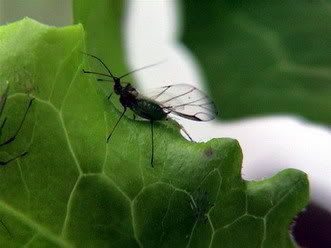Early hydroponic operations were devastated by pest problems. White flies, leaf miners, pin worms, nematodes, Cladosporium leaf mold and viruses, as well as root diseases such as Pythium root rot and bacterial wilt, were common. Today, unlike 20 years ago, the drain solution is often sterilized (Runia, 1995). The options are heat treatment, ozone and ultraviolet radiation. The University of Arizona has a program to control certain root diseases with surfactants or by using nonchemical approaches. While the results are not yet practiced in hydroponic systems, the results look promising.

Today integrated pest management (IPM) is of particular interest to Americans in CEA because of the paucity of pesticides with legal clearance for use in greenhouses. The frightening ability of some pests to develop resistance to chemical pesticides has revived worldwide interest in the use of natural enemies of insect pests, particularly when used in association with horticultural practices, genetics and other control mechanisms. Tomorrow's growers may be growing crops without applying any chemicals to control diseases and insects. Crop production requires both the identification of possible crop disease and insect problems, and the ability to properly integrate disease and insect prevention and control practices into a total management plan.

Today integrated pest management (IPM) is of particular interest to Americans in CEA because of the paucity of pesticides with legal clearance for use in greenhouses. The frightening ability of some pests to develop resistance to chemical pesticides has revived worldwide interest in the use of natural enemies of insect pests, particularly when used in association with horticultural practices, genetics and other control mechanisms. Tomorrow's growers may be growing crops without applying any chemicals to control diseases and insects. Crop production requires both the identification of possible crop disease and insect problems, and the ability to properly integrate disease and insect prevention and control practices into a total management plan.







